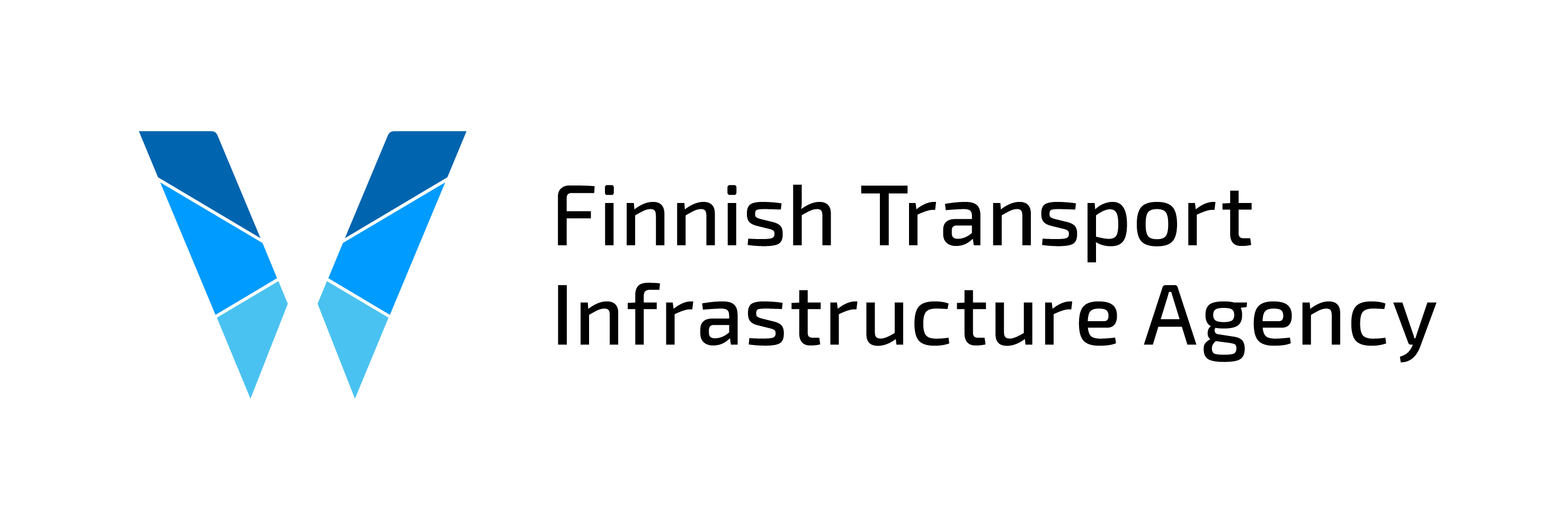The Government granted the Finnish Transport Agency a total of MEUR 595 in additional funding for the transport route Maintenance Backlog Programme 2016–2018. This sum allowed the agency to halt the deterioration of transportation route conditions and the growth of the debt related to maintenance backlog for a short time. Additionally, a few more costly transportation infrastructure maintenance projects were completed.
During the Maintenance Backlog Programme 2016–2018 a total of nearly MEUR 600 in additional funding was granted for use in the maintenance of transport infrastructure meaning the maintenance of roads, railways and waterways as well as for the development of digital solutions related to these over a period of three years.
Debt related to maintenance backlog refers to the amount of money necessary for the repair of transportation routes to a condition that meets today's needs. The aim of the maintenance backlog programme was to halt the accumulation of new debt caused by maintenance backlog and steadily decrease existing debt. During the preparation of the programme, customers were asked on which routes they believed maintenance procedures should be performed to produce the maximum benefit for business transport and commuter traffic.
Vesa Männistö, Senior Advisor at the Finnish Transport Agency is satisfied with the funding his agency received, which brought a welcome boost to the maintenance of deteriorating roads railways and waterways: “The most important accomplishment achieved from this funding was a halt in the deterioration of the route network and the growth of maintenance backlog related debt were halted. Especially in the road network funds could also be invested in the repair and maintenance of the low-volume network. This had not been done for some time on regional and connecting roads. This allowed the programme to support the operating conditions of forestry and the bioindustry.
Road maintenance measures and digitalisation will be visible in the long term
It might not yet be evident to road users that the maintenance backlog programme’s additional funding has been invested in quality. The surfaces of road have been renewed with more robust measures, such as thicker surfacing layers and the repair of road structures. “This will make maintenance easier in the future,” Männistö explains.
The digitalisation of route maintenance was also promoted during the programme and accounted for 35 million euros of money spent. Digital projects aimed at the extensive revision of the production, maintenance and distribution of information on transportation, routes and mobility. The aim has been to achieve better adherence to timetables, the better condition of routes, real-time information as well as the safety and satisfaction of route users. We will provide more information on digital development projects in coming weeks.
“The more robust maintenance procedures than normal and digital reforms will carry fruit long into the future. None of this would have been done without this additional funding,” Vesa Männistö says.
Significant maintenance locations: Jännevirta, Aurora and the rail network’s safety equipment
The additional funding also facilitated the implementation of a few special projects that were more costly and would not have been implemented otherwise. Good examples of these are the Jännevirta bridge, the revision of the rail network’s safety equipment as well as the Aurora project in northern Finland, during which a test area was created for automated transport and extensive road improvements were implemented on main road 21. It is usually impossible to fit in projects that are this extensive in the basic maintenance of transportation routes.
Why has the dissatisfaction of road users continued?
However, a recent study found that the satisfaction of road users in the condition of the road network had not increased. The dissatisfaction of road users was merely stalled for the duration of the funding period. Männistö feels that the reason for this is that although the amount of funding received by the Maintenance Backlog Programme was large, it only covered a small share of the overall need.
“In practice, the programme only provided a 20% increase in funding per year, and when this was distributed around the country it was not evident as a huge improvement to road users. The low-volume road network had deteriorated to the extent that the additional funding for the three-year project was not enough to see it restored to good condition,” Männistö states.
Männistö feels that another reason for this was that over the three-year period no investments were specified to winter maintenance from the additional funding over the three-year period, an area that road users are generally displeased with. This point was prominent, in particular, because the winters during this period happened to be exceptionally challenging due to fluctuating weather conditions. Improvements to this situation are expected in the long term when new winter maintenance guidelines and a new winter maintenance contract model enter into force.
Deteriorating infrastructure a reason for concern
Now that funding has dropped to the same level as before the programme, the condition of route networks will begin to deteriorate. Männistö is worried that the benefits of the maintenance backlog programme will be used up very quickly. The adequate maintenance of road and rail networks as well as waterways is a prerequisite for guaranteeing the functional capacity of business and the safe mobility of all citizens. We are in dire need of permanent additional funding for the maintenance of infrastructure.
Inquiries:
Mr Vesa Männistö, Senior Advisor for Asset Management, Finnish Transport Agency tel. +358 29 534 3569
Repair sites on a map and additional information on e.g. how sites are selected
